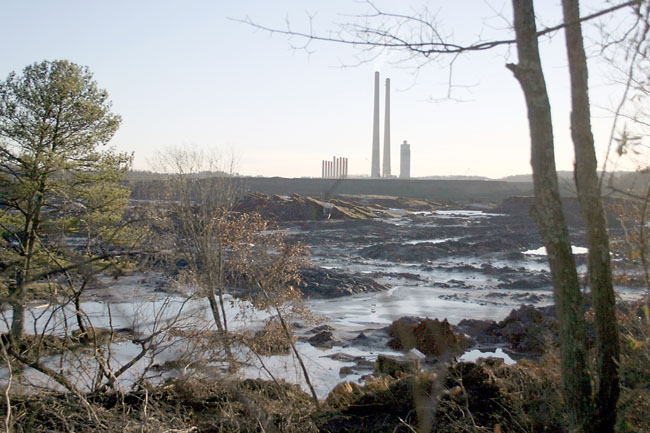Consultant William Walton testifies on study on 2008 TVA coal ash spill
Friday, October 7, 2011
KNOXVILLE - An engineering consultant hired by the Tennessee Valley Authority to find the cause of its disastrous coal ash spill testified Thursday about his report that the utility's watchdog agency has criticized as a TVA attempt to protect against lawsuits.
Geotechnical engineer William H. Walton, who oversaw a $3 million study by AECOM USA Inc. on the cause of the Dec. 22, 2008, ash spill, described how he was hired and prepared the report that placed a lot of blame for a dike collapse on a "slime layer" of watery ash deep underneath the surface.
Walton, who since has changed jobs, said on the 13th day of the federal bench trial that his job was a "geotechnical failure analysis."
In hours of technical testimony accompanied by charts, drawings and photographs, Walton described the slimes as manmade "highly unusual materials having low sheer strength properties" and said it is created by the tiniest of ash particles. Walton said the slimes over the clay bottom became liquified over time and caused pressure that triggered the disaster. He said the spill would have happened regardless of construction or design.
"What I have is a slime layer that has buckled," he said.
Attorneys for property owners suing TVA for damages from the Kingston Plant spill contend negligence in management and training practices caused the disaster. They have cited TVA Inspector General Richard Moore's criticism that the AECOM report failed to consider management practices and gave too much weight to the slime layer.
The TVA inspector general has said that slimes finding tended to reduce the "legal liability" of TVA management. His report also said management's decision to allow TVA's lawyers to hire the consultant and narrow his focus for the "root cause" study predetermined a choice "between accountability and litigation strategy."
Another study said the spill "could have possibly been prevented" if TVA had heeded concerns about the stability of the ash pond raised by TVA employees and consultants as early as 1985 and again in 2004.
The wave of toxin-laden ash - a byproduct of coal-fired electric generation - crashed into the Emory River and lakeside homes, covering 300 acres.
Earlier Thursday, former TVA coal ash storage foreman Thomas Settles testified he doesn't believe anybody ever received copies of reports from daily inspections of the dikes and ponds at the Kingston Plant.

